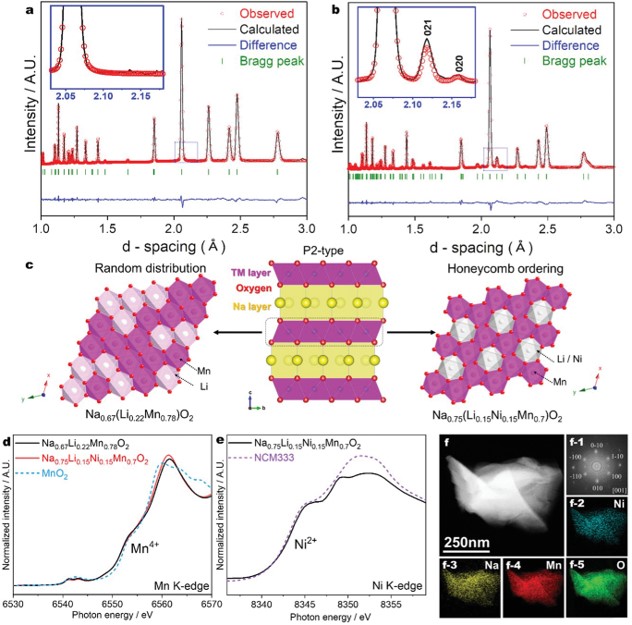
Oxygen-redox-based cathode materials for sodium-ion batteries (SIBs) have attracted considerable attention in recent years owing to the possibility of delivering additional capacity in the high-voltage region. However, they still suffer from not only fast capacity fading but also poor rate capability. Herein, P2-Na0.75[Li0.15Ni0.15Mn0.7]O2 is introduced, an oxygen-redox-based layered oxide cathode material for SIBs. The effect of Ni doping on the electrochemical performance is investigated by comparison with Ni-free P2-Na0.67[Li0.22Mn0.78]O2. The Na0.75[Li0.15Ni0.15Mn0.7]O2 delivers a specific capacity of ≈160 mAh g−1 in the voltage region of 1.5–4.6 V at 0.1 C in Na cells. Combined experiments (galvanostatic cycling, neutron powder diffraction, X-ray absorption spectroscopy, X-ray photoelectron spectroscopy, and nuclear magnetic resonance (7Li NMR)) and theoretical studies (density functional theory calculations) confirm that Ni substitution not only increases the operating voltage and decreases voltage hysteresis but also improves the cycling stability by reducing Li migration from transition metal to Na layers. This research demonstrates the effect of Li and Ni co-doping in P2-type layered materials and suggests a new strategy of using Mn-rich cathode materials via oxygen redox with optimization of doping elements for SIBs.
